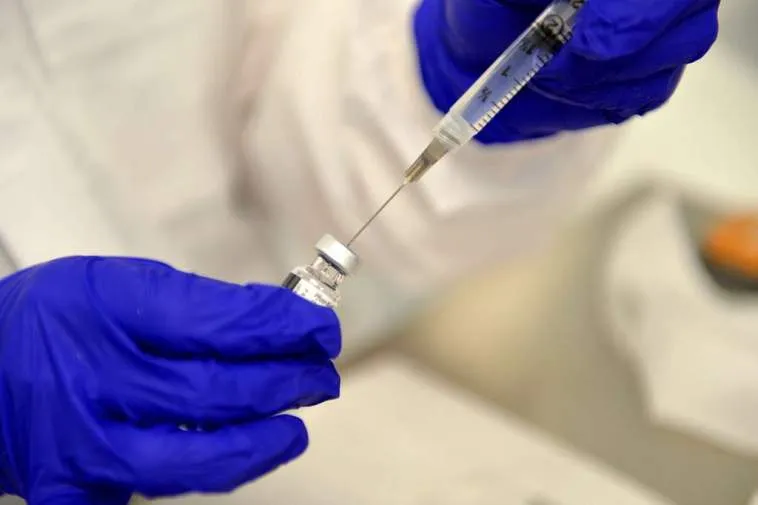(The Exposé) In a recent article, Dr. William Makis highlighted three science papers about mRNA “vaccines” which are cause for great concern. The three papers are:
- Study 1 – Matteo Zurlo et al.,The anti-SARS-CoV-2 BNT162b2 vaccine suppresses mithramycin-induced erythroid differentiation and expression of embryo-foetal globin genes in human erythroleukemia K562 cells, bioRvix. doi: https://doi.org/10.1101/2023.09.07.556634 (7 September 2023).
- Study 2 – Laura Breda et al., In vivo hematopoietic stem cell modification by mRNA delivery. Science 381,436-443(2023). doi: https://www.science.org/doi/10.1126/science.ade6967 (27 July 2023).
- Study 3 – Puccetti, M.; Schoubben, A.; Giovagnoli, S.; Ricci, M. Biodrug Delivery Systems: Do mRNA Lipid Nanoparticles Come of Age? Int. J. Mol. Sci. 2023, 24, 2218. https://doi.org/10.3390/ijms24032218 (22 January 2023).
Formation of Blood Cells in Our Bodies
Our bodies produce blood cells continuously from the time we are in the womb up to old age. Millions of blood cells are replaced each day as they live out their lifespans. The lifespan for red blood cells is around 120 days.
There are more than 10 different kinds of blood cells, each performing its own set of tasks. Though red and white blood cells may end up in different places in the body, after we are born production of blood cells starts in the bone marrow. Bone marrow makes more than 220 billion new blood cells every day.
Haematopoiesis (adj. haematopoietic) is the medical term used to describe the process by which our blood cells are formed, develop and mature into their final “adult” types. The process begins with a haematopoietic stem cell (“HSC”), which then goes through a series of steps to arrive at the final product – a mature blood cell. A mature blood cell would be a red blood cell, a white blood cell such as a lymphocyte, or some other type of blood cell.
Lymphoblast cells are immature white blood cells that develop into healthy immune cells called lymphocytes. In leukaemia patients, for example, lymphoblasts don’t mature. Instead, they multiply rapidly in the bone marrow and interfere with blood cell production.
In a 2020 Nature Biomedical Engineering study, researchers used a type of genetic therapy, known as RNA interference, and nanoparticles modified in such a way that they would accumulate in the cells found in the bone marrow, rather than in the liver. These particles could be tailored to help treat heart disease or to boost the yield of stem cells in patients who need stem cell transplants, Penn Engineering Today wrote.
RNA interference is a gene therapy that could potentially be used to “treat a variety of diseases” by delivering short strands of RNA that block specific genes from being turned on in a cell. Using this gene therapy technique with specialised nanoparticles, researchers from Penn Engineering and the Massachusetts Institute of Technology (“MIT”) developed a way to turn off specific genes in cells of bone marrow.
“RNA nanoparticles are currently FDA-approved as a liver-targeted therapy but hold promise for many diseases, ranging from covid-19 vaccines to drugs that can permanently repair disease genes,” said Daniel Anderson, one of the authors of the study. “We believe that engineering nanoparticles to deliver RNA to different types of cells and organs in the body is key to reaching the broadest potential of genetic therapy.”
“If we could develop technologies that could control cellular activity in bone marrow and the hematopoietic stem cell niche, it could be transformative for disease applications,” said Michael Mitchell, one of the study’s lead authors. Mitchell was already working on new nanotechnologies that target bone marrow and immune cells for treating other diseases, especially blood cancers such as multiple myeloma.
The 2020 study was funded in part by the National Institutes of Health and the European Union’s Horizon 2020 research and innovation program, among others.
Further reading: New Research from Penn Engineering and MIT Shows How Nanoparticles Can Turn Off Genes in Bone Marrow, Penn Engineering Today, 7 October 2020
Study 1
In a paper published last week, Italian researchers treated lymphoblast cells isolated from the bone marrow of a 53-year-old chronic myelogenous leukaemia patient with Pfizer’s mRNA covid injection, at increasing concentrations. As the dosage of Pfizer’s injection increased, the growth of stem cells was inhibited.
The researchers found that as the dosage of Pfizer’s mRNA increased, so the production of spike protein production rose dramatically and this rise appears to be exponential, i.e., the rate of increase becomes quicker and quicker. The effect was that the spike protein drastically decreased the expression of several globin genes in bone marrow stem cells.
The study authors concluded: “SARS-CoV-2 S-protein, covid-19 mRNA vaccines and SARS-CoV-2 infection might have dramatic effects of the hematopoietic compartment.” And that there was a “need of great attention on possible alteration of hematopoietic parameters following SARS-CoV-2 infection and/or covid-19 vaccination.”
In other words, the spike protein might have dramatic effects on and alter our bodies’ ability to produce mature blood cells.
Dr. Makis summarised the key points from Study 1 as follows:
- Pfizer’s covid-19 mRNA injection accumulates in the bone marrow and can inhibit the growth and suppress the differentiation of bone marrow stem cells.
- Pfizer’s spike protein can drastically alter gene expression in stem cells.
- Pfizer’s spike protein can increase the expression of pro-inflammatory genes.
- Spike protein production in bone marrow stem cells increases dramatically with increasing mRNA dose (looks exponential).
- Authors conclude: “Pfizer spike protein might have dramatic effects on the hematopoietic compartment.”
Study 2
In an NIH-funded study published in July, the authors injected lipid nanoparticles containing mRNA and delivered them to bone marrow stem cells where they conducted gene editing and “bone marrow transplantation.”
The researchers developed two payloads: one that edited a mutation for sickle cell disease, and another that selectively killed hematopoietic stem cells (“HSCs”).
The researchers designed the lipid nanoparticles to target HSCs using an antibody that binds to a protein found on these cells’ surfaces. After confirming that the nanoparticles were breaking through into about half of the blood cells, they loaded the antibody-coated nanoparticles with an mRNA encoding a protein that induces cell death. Although the nanoparticles killed HSCs, the researchers discovered some off-target effects, so they added tiny bits of non-coding RNA that kept the protein from killing other cells.
In another experiment, the researchers stuffed their nanoparticles with an mRNA sequence that produces a gene editor when it enters the cell. The editor targets a mutation in haemoglobin causing sickle cell disease.
The researchers tested the gene-editing nanoparticles on cells grown from samples taken from people with the disease. Reversing the mutation resulted in more than 95% of blood cells taking on a typical round shape rather than the sickle-like appearance characteristic of the disease. The researchers are working on fine-tuning the approach and testing it further in animals to get a better understanding of how efficiently it edits intended genes and how well it targets HSCs.
The study is “an impressive advance,” said David R. Liu, a chemist and gene editing expert at the Broad Institute of MIT and Harvard. Though many steps remain before clinical testing, he said, the approach “could lay a foundation for the much broader availability of programmable therapeutic gene editing to treat a variety of genetic blood disorders”
Study 3
The authors of a study published in January wrote: “Messenger RNAs (mRNAs) present great potential as therapeutics for the treatment and prevention of a wide range of human pathologies, allowing for protein replacement, vaccination, cancer therapy, and genomic engineering … Lipid nanoparticles (LNPs) have emerged as a very promising delivery method. However, when intravenously delivering LNPs, most of the cargo is trapped by the liver.” Modifying the composition of the lipids in LNPs allows for the more specific delivery of the LNPs to some organs.
Dr. Makis highlighted some points from the study and added some comments:






